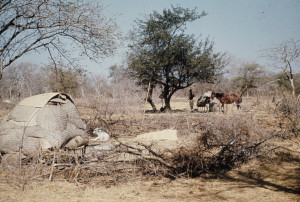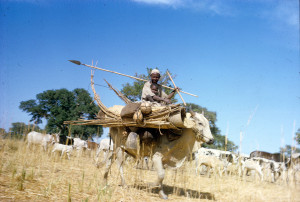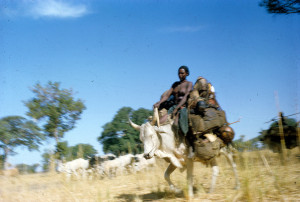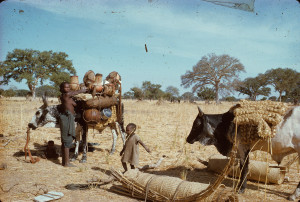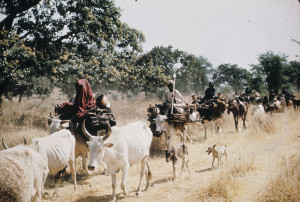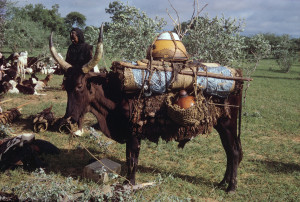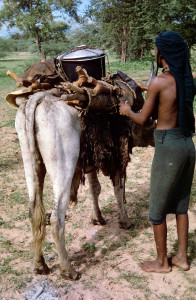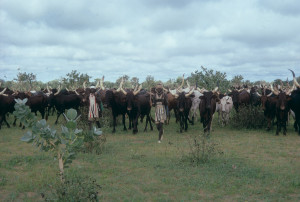The camp site of a Fur farmer who has succeeded in accumulating cash for investment in a sufficient number of cattle. Cattle thrive best when they are moved seasonally between different ecological zones. Successful Fur farmers therefore prefer to establish themselves as nomads like the Baggara Arabs when they have enough cows (Fur: “ko”). Note the tent made of straw mats (Fur and Arabic: “birish”) similar to those used by the Baggara nomads.
Lower Wadi Azum, Western Darfur.
Photo: Gunnar Haaland, 1965
